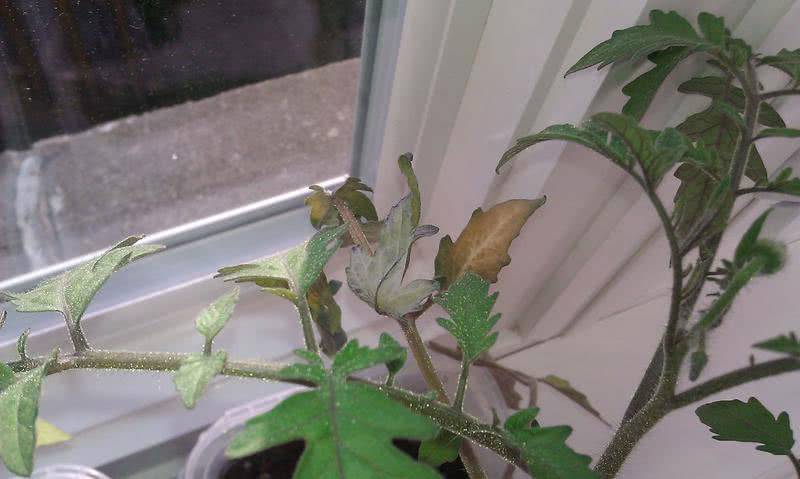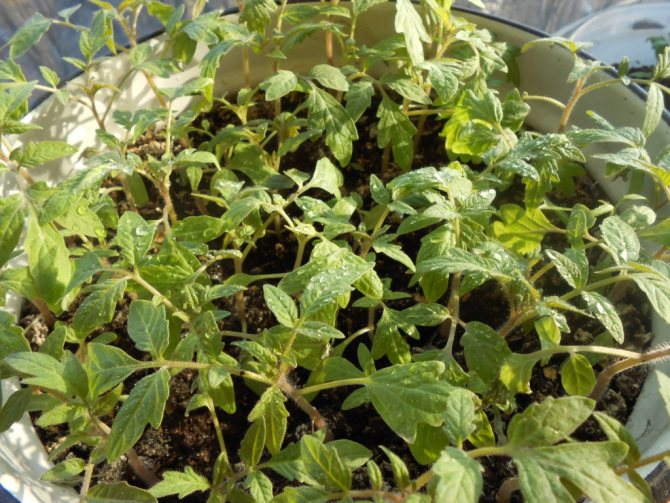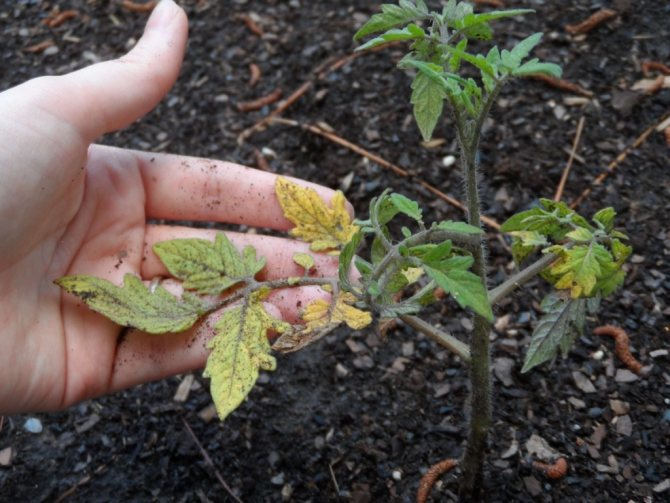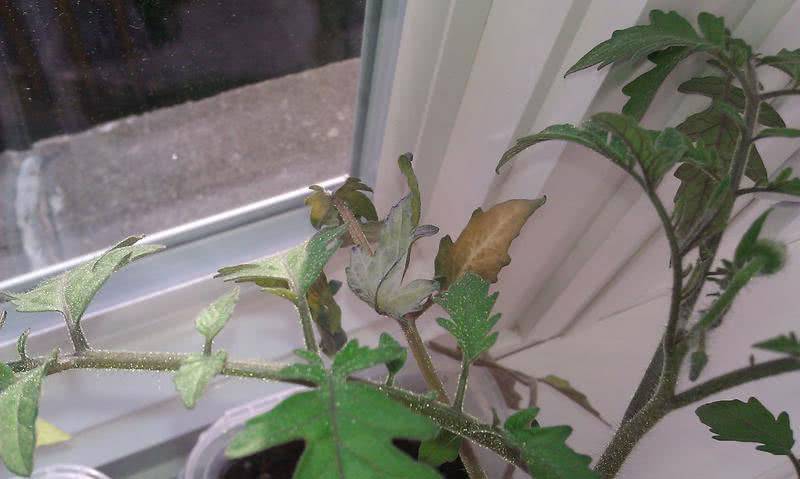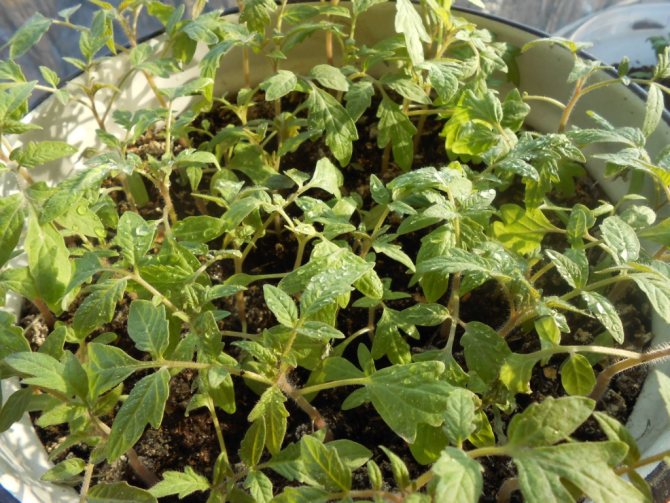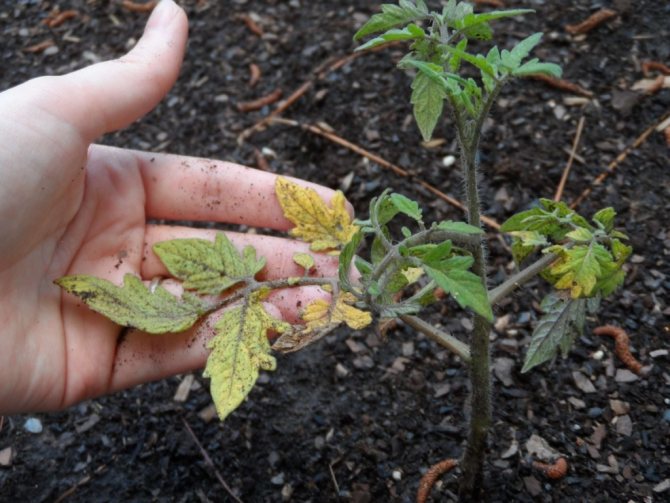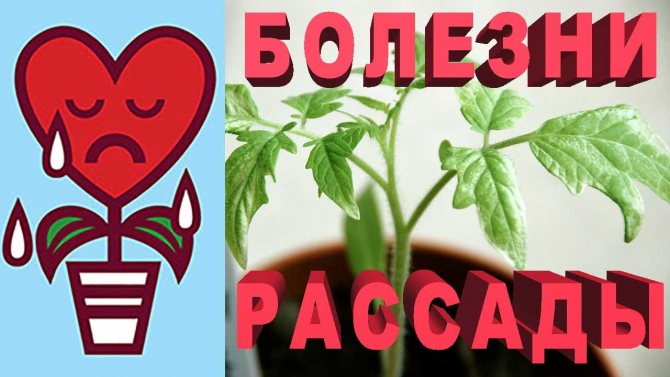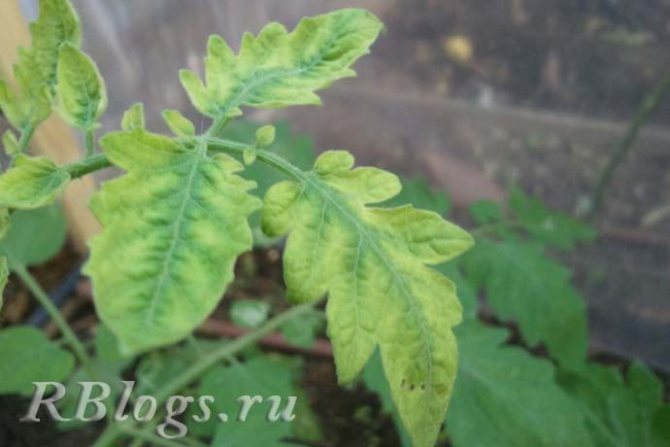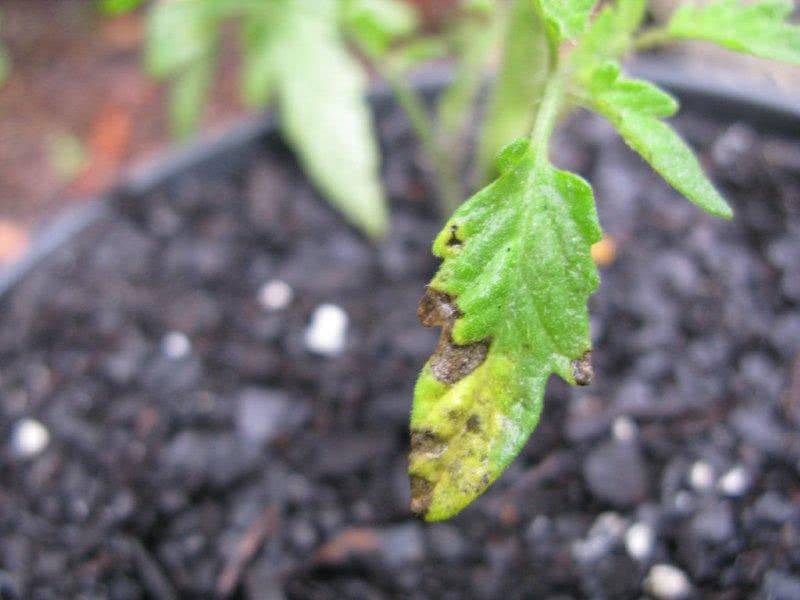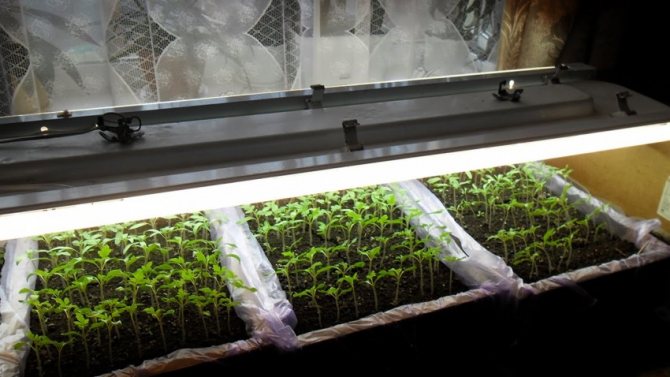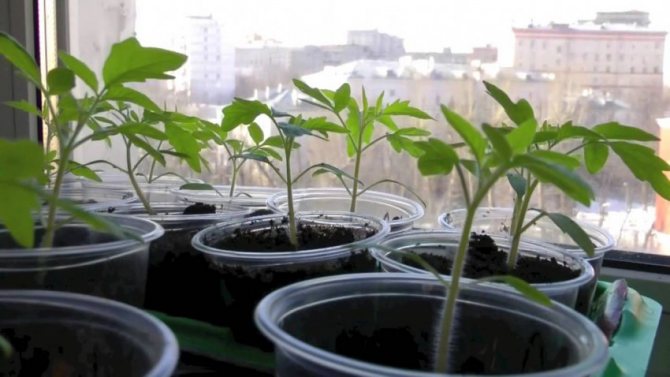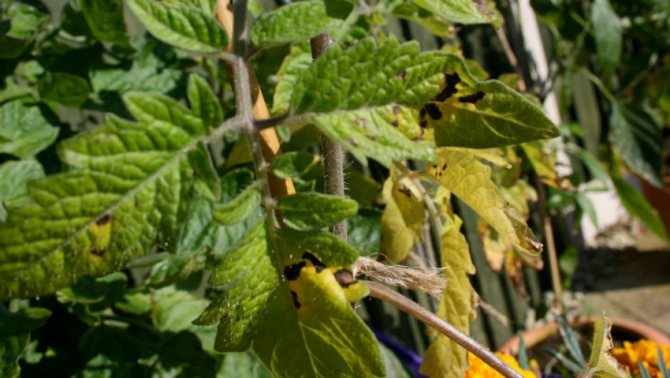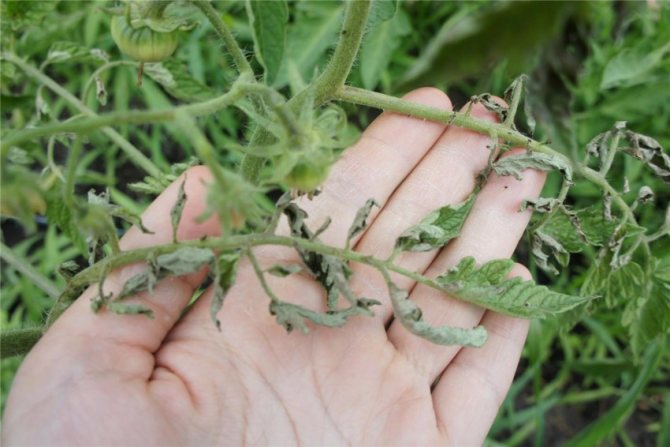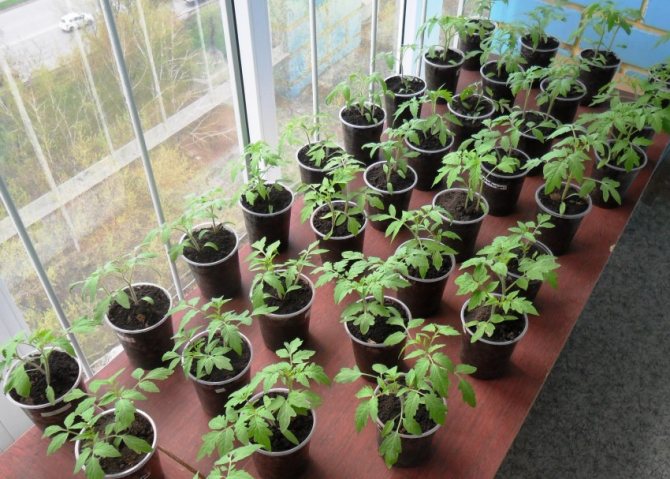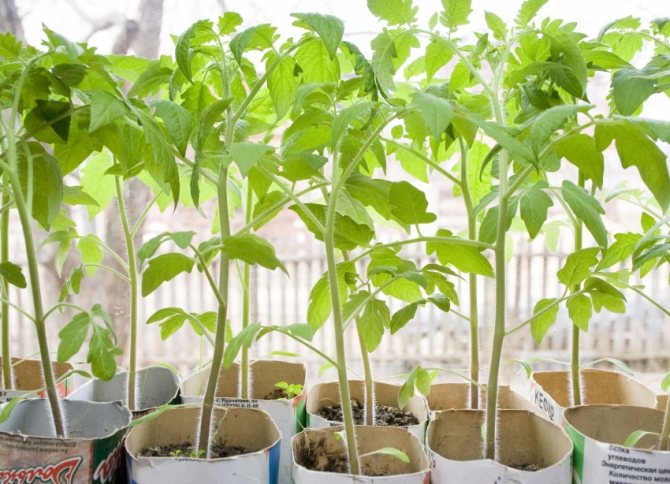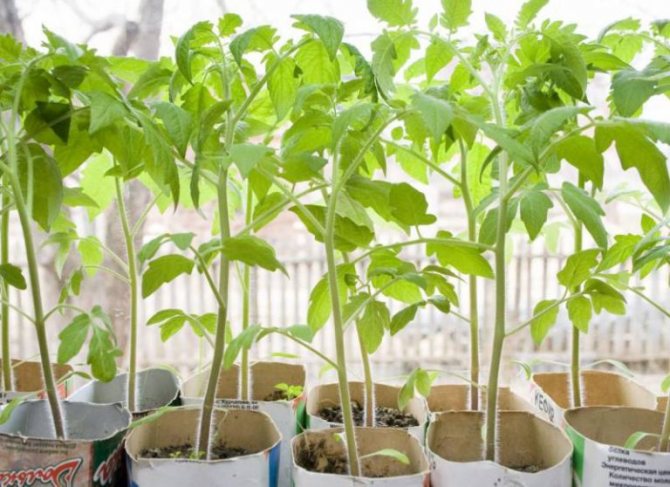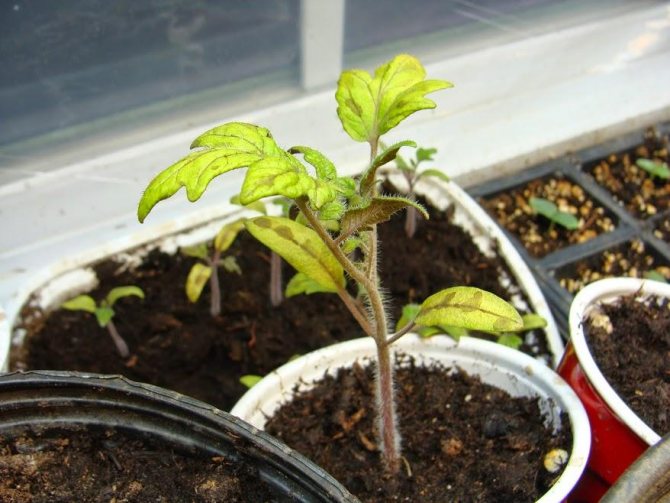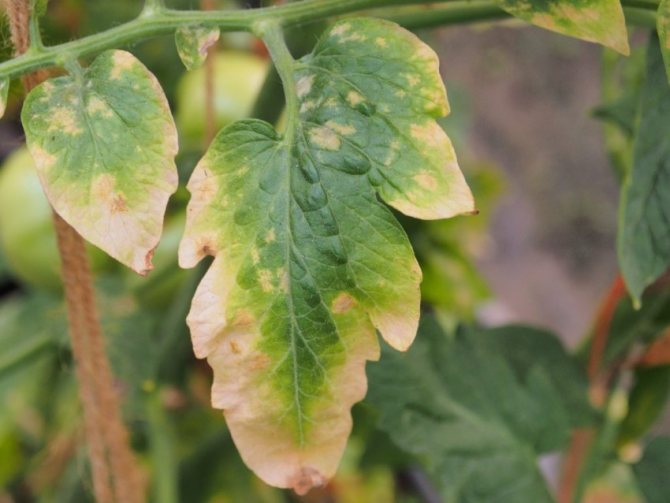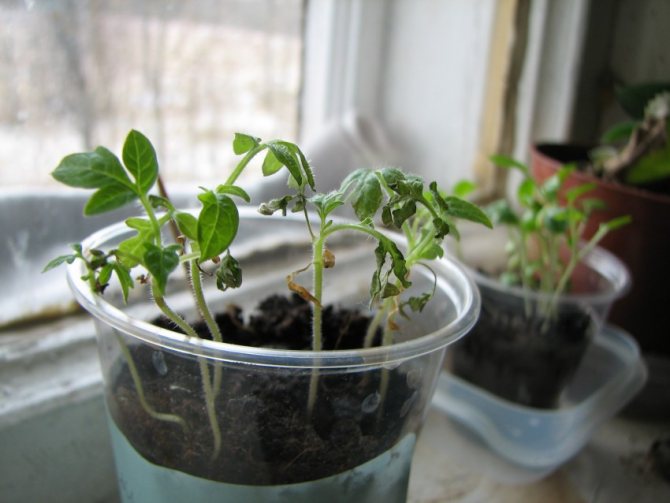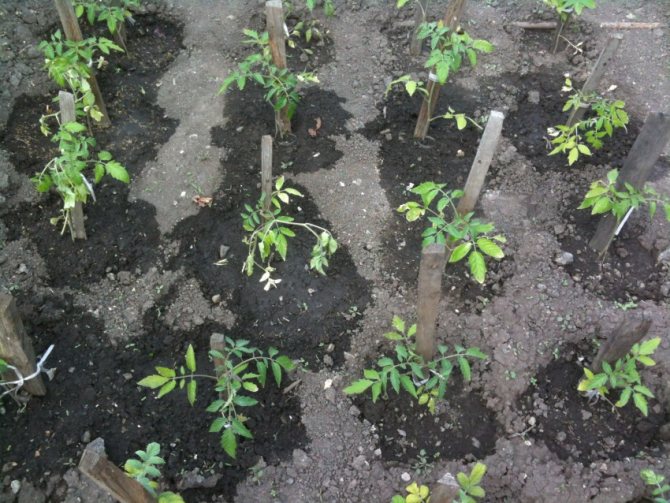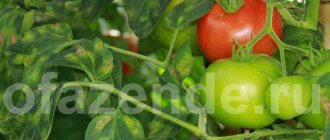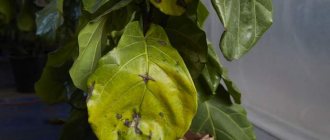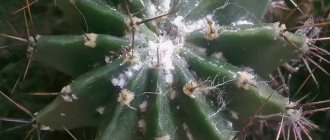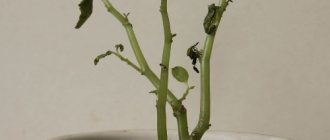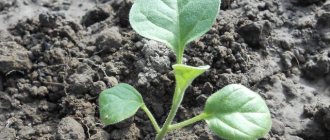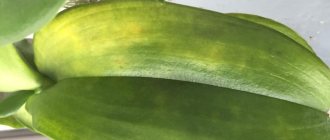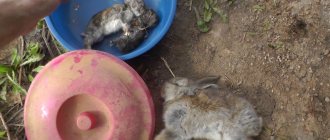Tomatoes are one of the most common vegetable crops in our country. Starting from the very early spring, gardeners begin work on growing seedlings in order to plant them in the ground in the future and get a good harvest of healthy and tasty tomatoes. This requires a lot of effort and time, so any diseases of tomatoes force summer residents to take immediate measures. For example, it is important to understand in time why tomato seedlings turn yellow, sometimes this is the only chance to save the crop.
If yesterday a healthy seedling starts to fade today, the leaves on it turn yellow, curl and become covered with brown spots, you should immediately begin its treatment. Almost always, yellow leaves indicate problems with plant development. There are several reasons why this is happening.
Diseases
One of the most common causes of yellow foliage is the appearance of various types of infections:
- fusarium. A symptom of the disease - the leaves first turned yellow, then wilted. To save young shoots, they can be sprayed with Fitosporin (twice with an interval of 10 days);
():
Fusarium wilting causes a soil fungus; the drug Glyocladin is used to protect it from it.
- blackleg. This is one of the most dangerous diseases for tomato seedlings, mainly in the greenhouse, which leads to the death of the sprouts. The risk of infection is high with regular over-watering. First, the root neck turns black, then the roots. Affected seedlings are disposed of. To avoid infection, it is worth maintaining the temperature regime at 20-23 ° C and avoiding waterlogging;
():
When affected by a black leg (rhizoctonia), the seedlings do not turn yellow (they do not have time to turn yellow). Seedlings, as vegetable growers say, "falls".
- dampness and low temperature are ideal conditions for late blight (fungal infection). This disease spreads very quickly, covering the entire aerial part of the plant with brown spots. Then the leaves curl and the shoots wither. To combat late blight, a saline solution is used (for 5 liters of water, 1 tbsp. L. Salt). Seedlings are sprayed twice with an interval of 7 days.
():
Late blight is a disease that affects tomatoes exclusively in the open field (but not seedlings). This fungal disease is provoked by special weather conditions in August - warm sunny days and cold nights with the fall of the morning dews from the fogs.
Prevention of yellowing of tomatoes
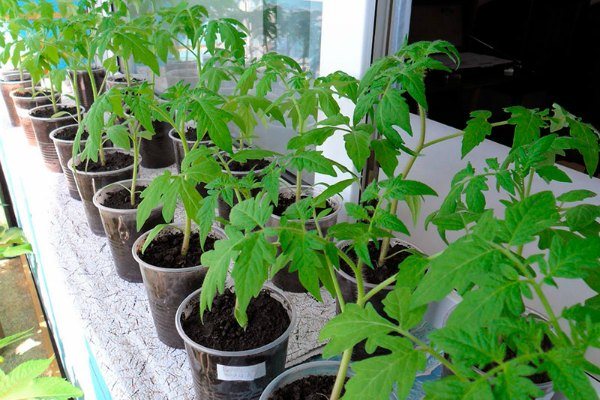
Yellowing of the leaves can seriously weaken tomato seedlings, slow down development, which negatively affects yields at the end of the season.
Preventive measures to prevent yellowing of the foliage of young tomatoes include:
- compliance with the requirements of the culture for cultivation - to ensure good illumination, optimal temperature, air humidity and regular, but moderate watering;
- high-quality soil preparation before sowing and picking - adding loosening components, keeping acidity close to neutral;
- timely balanced feeding of seedlings;
- dressing of seeds and substrate before sowing and transplanting fungicides, for example, Fundazol (1 g of the drug is diluted in 1 l of water);
- preparation of suitable sized planting containers with drainage holes;
- watering tomatoes only with warm, settled water.
It is much easier to prevent the appearance of yellowness on the foliage of tomatoes than to then look for the cause of its occurrence and take measures to save the seedlings. Prevention in this case is very important.
Bad light
This usually happens when the crops are kept in a shaded place. Due to the lack of light, the seedlings begin to stretch and then turn yellow.
It is recommended to grow tomatoes using seedlings at home on windows from the east or south-east side. In this place of the house or apartment, the sprouts receive the maximum amount of light. They should be protected from sunlight during lunch hours to avoid burns.
():
Poor lighting is one of the main causes of yellowing of seedlings. But even cultivation on the south window does not compensate for the lack of good illumination, because the sun on the south side is only a few hours a day. It is required either to transfer the seedlings to other windows during the day, or to supplement the lighting with lamps.
Violation of the microclimate in the greenhouse
Tomatoes can change the color of the leaves to yellow due to being in the unfavorable microclimate of the greenhouse. Plants thrive at temperatures from + 23 ° C to + 30 ° C, air humidity - from 60% to 75%.
If the temperature is exceeded, the plants stop developing. Waterlogged air threatens planting with diseases.
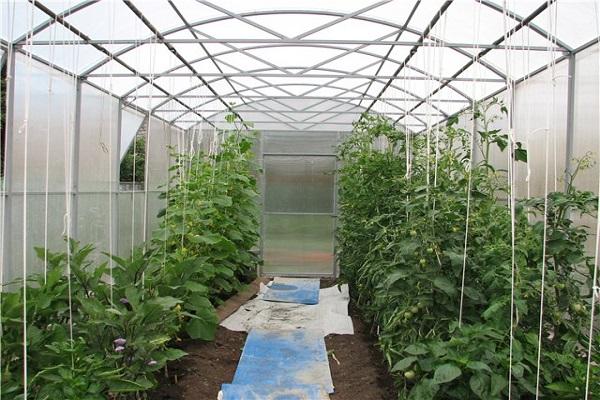

To create a favorable greenhouse microclimate, choose a place for the greenhouse in such a way that trees shade it at noon, and the sun's rays sink into the greenhouse in the morning and after lunch. If you arrange a greenhouse in an open, sunny area, the temperature in it will exceed +45 ° C.
This threatens not only yellowing of tomato bushes, but also the complete withering away of flower brushes and ovaries.
Unsuitable temperature
Violation of the temperature regime is one of the common causes of yellowing of tomato seedlings. Color change is possible at both too low and high temperatures.
Until the emergence of seedlings, the optimum temperature is 21-23 ° C during the day and 17-18 ° C at night. A week after the formation of sprouts, the crops are placed in a cool place with a temperature of about 15 ° C during the day and 10 ° C at night.
So the plants will put all their strength into the development of the root system and will not stretch. After five days, the sprouts are returned to their original place in a warm room.
Drafts, sudden temperature changes also negatively affect the condition of the sprouts and can cause them to turn yellow, wilting and die. Therefore, the room in which the seedlings are located must not be ventilated.
What to do if the lower leaves of tomatoes turn yellow - video
The foliage on tomato seedlings can turn yellow even in experienced gardeners. This phenomenon may be an absolutely natural reaction to the transplant and does not pose a particular danger, but in some cases such a signal forces us to actively fight for the healthy state of the bushes.
Therefore, it is impossible to neglect the yellowing of the aboveground part of the seedlings: you need to carefully examine the nature of the yellowing and specific lesions, identify the cause of this phenomenon and, if necessary, take decisive action.
Improper watering
If your seedlings have turned yellow, they may be lacking moisture or are too moist. Until the emergence of seedlings, the crops are slightly moistened with a spray bottle. After the formation of sprouts, the soil should be watered as it dries, but not more often than once every 3 days.
With excessive or insufficient watering, yellowing of the leaves is possible in adult bushes. The reason is not only in violation of this procedure, but also in getting sunburned foliage after moisturizing in hot weather.
To avoid this, it is necessary to water the tomatoes in cloudy weather in the morning or evening. Water must be poured at the root, avoiding getting it on the stems and leaves.
Tomatoes are strongly stretched, thinned and falling
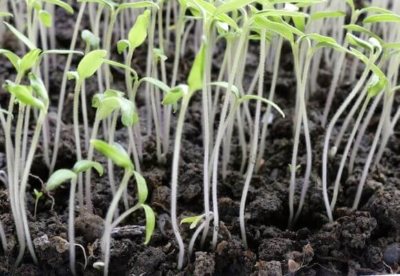

Stocky seedlings with thick stems and large leaves are much more viable. But sometimes it stretches, becomes thinner and even falls.
The most likely reason for this is lack or lack of sunlight, although there may be others:
- nitrogen deficiency or excess;
- improper watering;
- too dense growth in the box, when the plants shade each other;
- too high air temperature, bright sun.
Thin, elongated, pale stems clearly indicate that plants do not have enough light.
What to do if this has already happened and too thin and long stems begin to fall, you need to do the following:
- separate the seedlings, plant one at a time in deeper pots;
- add a composition of sand, dolomite flour, high peat and chicken droppings to the ground, i.e. feed with the necessary nutrients;
- cut off the lower leaves of the seedlings as they begin to come into contact with neighboring seedlings. The seedlings will experience some stress and stop their increased growth for 10-12 days;
- more often to turn away pots with seedlings from the sun (up to 6 times a day), exposed on the windowsill, so that the plants spend their energy on turning towards the light;
- touching plants, touching with hands, thereby stimulating the production of ethylene, which can inhibit the increased growth of seedlings upward.
Unsuitable soil
Tomatoes begin to turn yellow due to planting in unsuitable soil. You should not plant seeds in acidic, heavy and poor soil: this can lead not only to yellowing of the sprouts, but also to their further death.
Tomatoes love light soil with a neutral acidity level (pH 5.5-6). To improve aeration, garden soil can be mixed with sand, and for nutritional value - add rotted manure. The optimal proportions are 2: 1: 1.
In any soil, even in the store, there are pathogenic microbes that infect the sprouts, which leads to their death. Therefore, before planting, the soil is watered with a solution of potassium permanganate or ignited in the oven.
The appearance of pests
Tomatoes suffer from the appearance of aphids, spider mites and whiteflies. These pests draw sap and vitality from plants. Their spread leads to yellowing of foliage and wilting.
You can fight insects by spraying. The preparations "Inta-vir" and "Iskra" are used if there is a month before the start of ripening of tomatoes. They will not harm the culture and soil, but will have a paralytic effect on the nervous system of the pests.
Biotlin is used if the crop is ripe in less than a month. This drug works faster.
Feeding errors
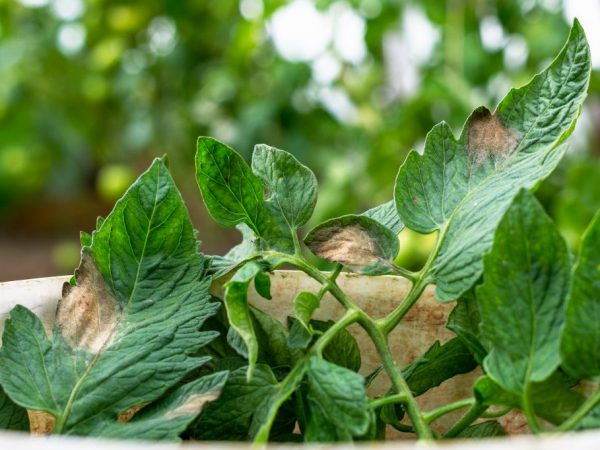

An oversupply of fertilizer can lead to plant death.
Yellowing of tomato seedlings can occur due to a lack or excess of nutrients, so it is important to follow the dosage and fertilization schedule indicated on the package:
- yellow spots on tomato seedlings are one of the signs of copper deficiency. This component is especially important at the initial stage of seedling development, because it stimulates root growth and strengthens the aerial part of the tomato. Fertilizer must be applied after the appearance of the first cotyledons - use a solution of 1 tsp. copper and a liter of water;
- the second fertilization of seedlings is carried out a week after the pick. Nitrogen-containing preparations are introduced. The most popular top dressing is urea solution (1 tbsp. L per 10 l of water). Pour 200 ml of nutrient solution under each bush;
- with a lack of phosphorus, the upper leaves turn yellow. You can reanimate such crops if you feed them with a weak solution of superphosphate - 1 tbsp. l. on a bucket of water. 200 ml of the substance is added under each plant;
():
Lack of phosphorus - the purple-pink underside of the leaves. The leaves are folded like a boat along the main vein.
- potassium deficiency is indicated by dehydrated lower leaves on seedlings. Over time, the whole plant withers. The tomatoes turn yellow and dry.You can fix the problem if you feed the tomatoes with potassium salt - 1 tbsp. l. on a bucket of water. Pour 100 ml of liquid under each plant;
():
Lack of potassium manifests itself in the form of "edge burn" of the leaves - browning and drying of the leaf edge.
- small yellow spots on the surface of the leaves are a sign of zinc deficiency. In this case, the seedlings need to be fed with a weak solution of zinc sulfate (0.1%);
- with a lack of iron, the lower leaves (and later all the foliage) acquire a light yellow or whitish tint. To fill the lack of this trace element will help the drug "Chelate". It is brought in according to the instructions on the package.
():
A sign of iron deficiency is yellowing (or even whitening) upper on the shoots of leaves. The lower leaves turn yellow from a lack of nitrogen in the soil.
Malnutrition
Poor nutrition can also be a provoking factor, namely the low content of trace elements necessary for tomatoes.
What micronutrients may be insufficient? These are potassium, nitrogen, magnesium, zinc, manganese, and also iron.
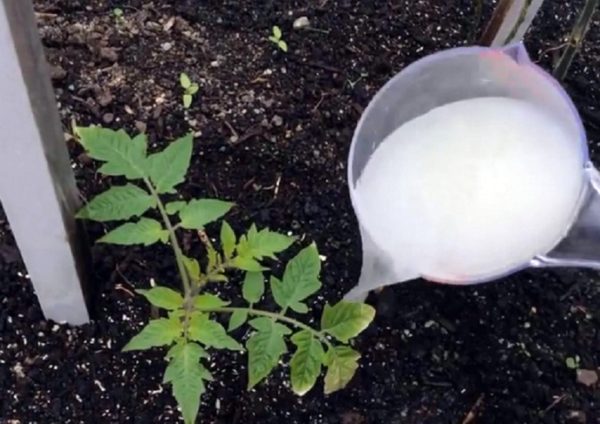

If there is very little potassium, then the tips and edges of the leaves begin to turn yellow. At the same time, the veins retain their original green color. If there is little nitrogen, then the tips begin to turn yellow, and then the veins of the foliage. A low calcium content leads to a withered appearance of foliage, it begins to deform and curl.
If there is no zinc in the substrate, then the leaves become yellowish, they are distinguished by pronounced veins, which begin to protrude slightly above the leaf plate. With a small amount of iron, the leaves that are on top of the plant begin to turn yellow rapidly, the veins bulge and have a dark green tint. In this case, the new leaves grow smaller in size.
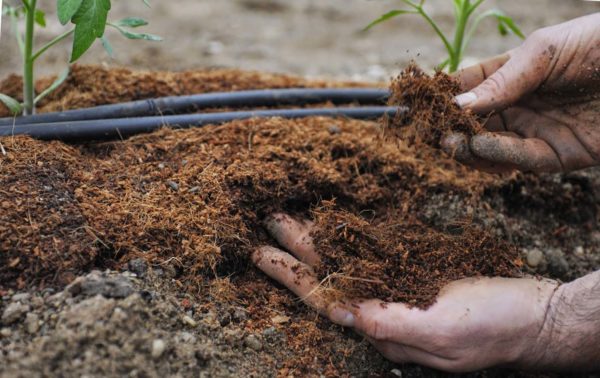

With a small amount of magnesium, a yellow edging appears along the contour of the veins. If there is little phosphorus, then the plant begins to turn yellow from above, and the stem and leaves turn purple.
With an excess of various trace elements, the entire leaf plate begins to turn yellow. In the absence of manganese, the old leaves begin to brighten first, and then the young ones. Gradually, the leaves turn completely yellow, they wither.
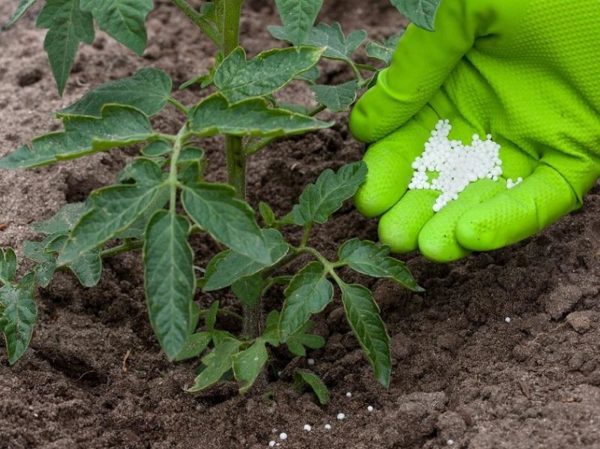

By the way, insufficient nutrition is also the reason that the leaves of the planted tomato seedlings turn yellow, and what to do in this case? You need to do the same as in the case of plants that are grown on the window - you should feed them with the necessary trace elements.
Poor quality seeds
If, even if all the above rules are followed, the tomato seedlings turn yellow, perhaps the reason lies in the use of low-quality seed.
For sowing, you must choose seeds harvested from last year's harvest.
Before disembarking, you need to:
- cull the seeds by soaking them in a saline solution (1 tsp per liter of water). All seeds that have sunk to the bottom must be removed, washed and dried;
- then - soak them in a solution of potassium permanganate (1 g per liter of water) for half an hour;
- to increase the percentage of germination and good growth, the seeds are immersed in a solution of "Epin" or "Zircon", they are kept in it for an hour, then washed;
- the last procedure is to stimulate germination. The seeds are wrapped in damp gauze and placed in a dark place for a day.
From such seeds, a strong tomato seedling is obtained, which is rarely affected by diseases and parasites.
Why do plants dry?
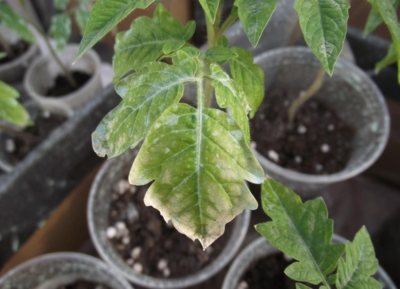

First of all, it should be noted at what speed the negative process is taking place.
If the leaves dry out rapidly, this is a symptom of serious root damage and the plantis likely to die.
If the process is slow, so far only the tips are affected, you can try to save the seedlings.
Reasons why seedlings may dry out:
- improper watering;
- bad light;
- lack of minerals.
The following steps will help save seedlings:
- carefully remove the seedlings from the box
- inspect the roots of the plant and assess their safety, transplant into new soil with good drainage;
- add a weak solution of potassium permanganate to the soil;
- shade the freshly planted seedlings a little, expose to the light after complete rooting.
Other reasons
There are other reasons why tomatoes turn yellow:
- sprouts can change color if they are placed on a windowsill on the south or southwest side of the house, where the sun is most active. The leaves become covered with yellow spots, eventually turn yellow and dry out completely. To avoid this, crops should be kept on an east or southeast windowsill with diffused daylight. In the absence of such a place, the sprouts need to be protected from the sun at noon;
- often tomatoes turn yellow after a pick - the reason for the injury to young roots. Before carrying out the procedure, it is necessary to water the soil abundantly in order to facilitate the process of removing the roots. The pick is carried out by the method of transshipment of an earthen lump;
- one of the reasons for the massive yellowing of leaves in tomato seedlings is planting in a garden bed or greenhouse without getting used to sunlight. Before planting, the plants must be hardened for ten days and adapted to the sun's rays. In the first days after transplanting, tomatoes need shading, otherwise they will quickly wither, turn yellow and die;
- if the leaves on the tomatoes turn yellow after transplanting, this is a sure sign of a lack of copper in the soil. A garden bed with tomatoes in a greenhouse or in the open field must be sprayed with a solution of copper sulfate of 1% concentration, then you need to dig it;
- the second reason for yellowing after transplantation is the presence of pathogenic microbes or fungus in the soil. First, the lower leaves turn yellow, then the yellowness covers the entire stem, and the plant dies. To disinfect the beds in the greenhouse or on the site, they are treated with bleach. 200 g of the substance is added to 1 m², then a deep digging is done. The disinfection procedure is carried out in the fall, because this drug inhibits the growth and development of tomatoes during the growing season.
Fungal control methods
It is customary to distinguish three methods of combating the fungal disease parasitizing on tomato bushes.
Biological method
This type of fungal disease control is most often used in a greenhouse. You need to remove the top layer of soil, usually a depth of about 20 cm is chosen. After that, fertilizer is brought into the greenhouse, most often manure. After that, the harvested soil layer can be returned to its place. According to scientific data, then complete disinfection will occur after 2 years. You are required to carefully look after the site, get rid of weeds in time and dig it up at least once a year.
Thermal method
In order to use thermal methods, it is also worth removing the top layer of the earth, choosing the same recommended depth, after which you need to store the earth in boxes. Next, you have to conduct a thorough disinfection of the entire earth by heating it on fire. It should be said that before this procedure, it is important to generously moisten the soil. In the process of warming up, you need to constantly stir the earth so that it warms up evenly. Also, make sure that the temperature does not rise above 100 degrees, otherwise it will kill all the minerals in the ground.
Chemical method
In the fight against fungus, many prefer more aggressive methods, for example, chemical, namely the cultivation of the earth with chlorine lime. In comparison with the above methods, this one works much faster and more efficiently. In order to prepare the solution, you will need 200 grams of powder per 5 cubic meters. It is recommended to carry out chlorination in the autumn, only in this way such treatment will not negatively affect the growth of the plant.
Preventive measures
To prevent tomatoes from turning yellow, you need to adhere to simple prevention rules:
- use only high-quality and treated seeds for sowing;
- the soil should be light, loose, fertile and free of pathogenic microflora;
- choose a suitable container for planting, in which the sprouts will fully develop and receive the required amount of moisture and nutrients (the optimal volume is 200 ml);
- pick and fertilize the sprouts on time and correctly;
- use high-quality soil for transplanting plants to the garden, and 10 days before that, harden and accustom to sunlight;
- as tomatoes grow, proper care should be provided - shading from the sun, regular watering, weeding and feeding.
Compliance with the above recommendations will help you grow strong seedlings at home and healthy fruit-bearing bushes in the garden.

